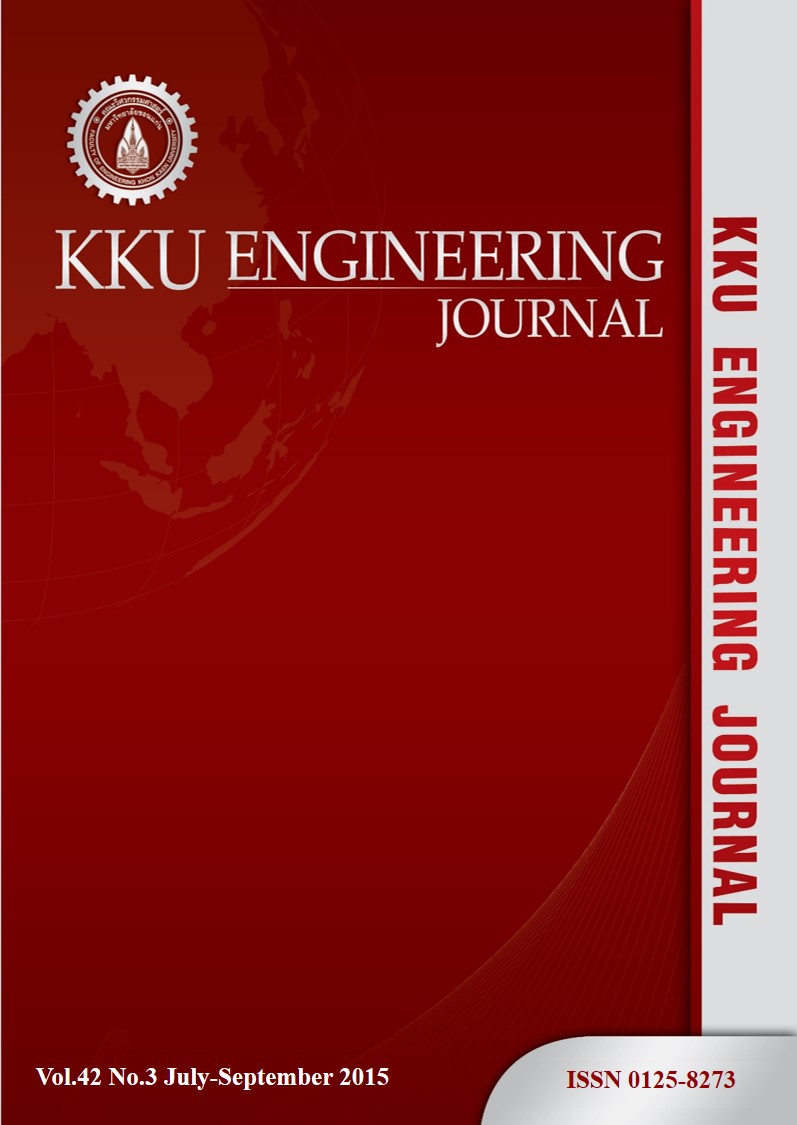Removal of green 40 from aqueous solutions by adsorption using organo-corn straw
Main Article Content
Abstract
The objective of this study was to investigate the adsorption characteristics of green 40 on organo-corn straw which was prepared by means of adsolubilization in batch tests and fixed bed column experiments. The batch tests were studied as functions of contact times (t), initial pH solutions (pH0), and initial dye concentrations (Ce). The adsorption reached equilibrium within 5 h and the amount of the dye adsorbed decreased with increases in pH0. The adsorption isotherm followed Langmuir and Freundlich isotherms and the kinetic data obeyed the pseudo-second order kinetic model. The fixed bed experiments were carried out as functions of inlet dye concentrations, liquid flow rates, and bed heights. The breakthrough point appeared faster with increases in liquid flow rates and inlet dye concentrations, but presented more slowly with increases in bed heights. It was found that the highest adsorption capacity of 152.75 mg/g was obtained under the condition of inlet dye concentration of 200 mg/L, bed height of 16 cm, and flow rate of 3.5 mL/min. The adsorption data were fitted to three well-established fixed-bed adsorption models, Adams-Bohart, Thomas, and Yoon-Nelson models with good coefficients. The results showed that organo-corn straw can be used as an effective biosorbent for the removal of green 40 from wastewater.
Article Details
How to Cite
Umpuch, C. (2015). Removal of green 40 from aqueous solutions by adsorption using organo-corn straw. Engineering and Applied Science Research, 42(3), 250–257. retrieved from https://ph01.tci-thaijo.org/index.php/easr/article/view/38303
Issue
Section
ORIGINAL RESEARCH
This work is licensed under a Creative Commons Attribution-NonCommercial-NoDerivatives 4.0 International License.



